
Aline Caroline de Rothschild, Lady Sassoon was a French socialite and daughter of Cécile Anspach and Baron Gustave de Rothschild of the Rothschild family.

Amastus is a genus of moths in the family Erebidae. The genus was erected by Francis Walker in 1855.
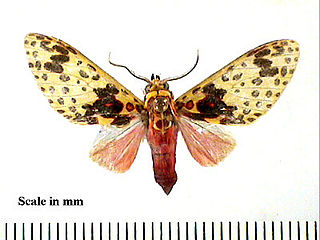
Amaxia is a genus of moths in the family Erebidae erected by Francis Walker in 1855. The type species of the genus is Amaxia pardalisWalker, 1855.
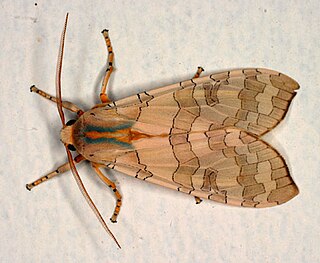
Halysidota is a genus of moths in the family Erebidae. The genus was erected by Jacob Hübner in 1819.

Idalus is a genus of moths in the family Erebidae. The genus was erected by Francis Walker in 1855.

Leucanopsis is a genus of moths in the family Erebidae. The genus was described by Alfredo Rei do Régo Barros in 1956.

Lophocampa is a genus of moths in the family Erebidae. The genus was erected by Thaddeus William Harris in 1841. It contains around 75 species.

Melese is a genus of moths in the family Erebidae. The genus was erected by Francis Walker in 1854.

Paranerita is a genus of moths in the family Erebidae erected by George Hampson in 1901.

Phragmatobia is a genus of moths in the subfamily Arctiinae described by Stephens in 1828. Many tiger-moth species of small and medium size were described within this genus. However, only a few are related to the type species.
Zatrephes is a genus of moths in the family Erebidae. The genus was erected by Jacob Hübner in 1819. It was formerly considered part of the Arctiidae. It includes the former genus Ennomomima, which is now considered a synonym.
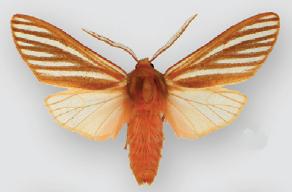
Pseudohemihyalea is a genus of moths in the family Erebidae described by Régo Barros in 1956. While the caterpillars of most species of Pseudohemihyalea feed on broad-leaved trees, the P. ambigua group has larvae that feed on conifers. Their forewing coloration has accordingly evolved to light-and-dark lengthwise striping, giving better camouflage among the slim needles of the host plants. In this, they seem to be convergent to certain geometer moths, such as Caripeta piniata or Sabulodes niveostriata.
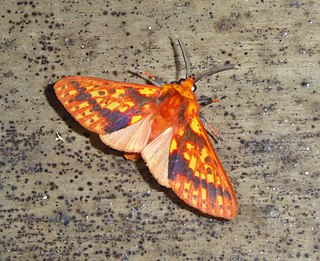
Symphlebia is a genus of moths in the family Erebidae. The genus was erected by Felder in 1874.

Trichromia is a genus of moths in the family Erebidae erected by Jacob Hübner in 1819. The members of this genus are largely indigenous to South America.
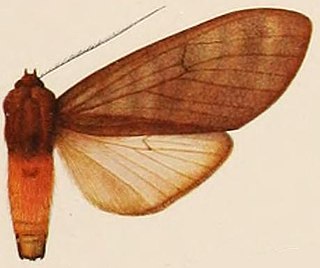
Amastus umber is a moth of the family Erebidae first described by Walter Rothschild in 1909. It is found in Venezuela.

Amastus muscosa is a moth of the subfamily Arctiinae first described by Walter Rothschild in 1909. It is found in Peru.
Amastus cellularis is a moth of the family Erebidae. It was described by Walter Rothschild in 1922. It is found in Peru.
Amastus mossi is a moth of the family Erebidae. It was described by Walter Rothschild in 1922. It is found in Peru and Ecuador.
Amastus walkeri is a moth of the family Erebidae. It was described by Walter Rothschild in 1922. It is found in Peru.
Opharus lehmanni is a moth of the family Erebidae. It was described by Walter Rothschild in 1910. It is found in Colombia.












